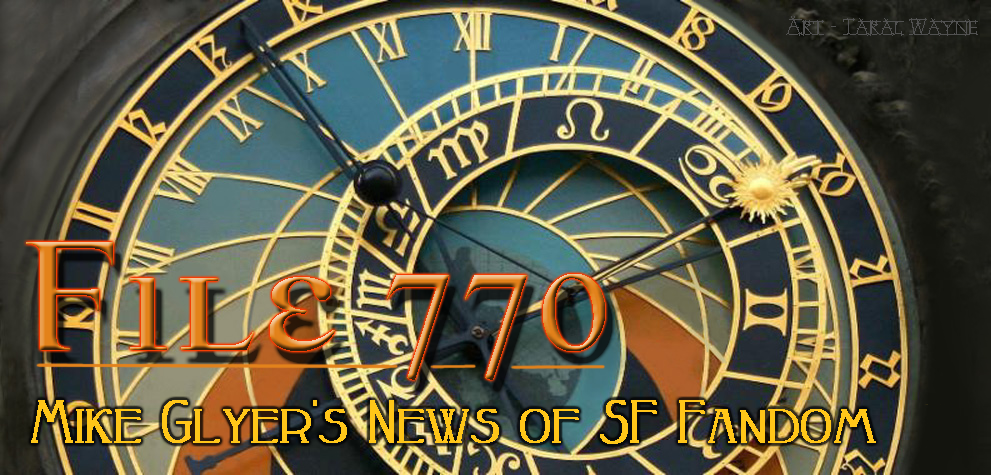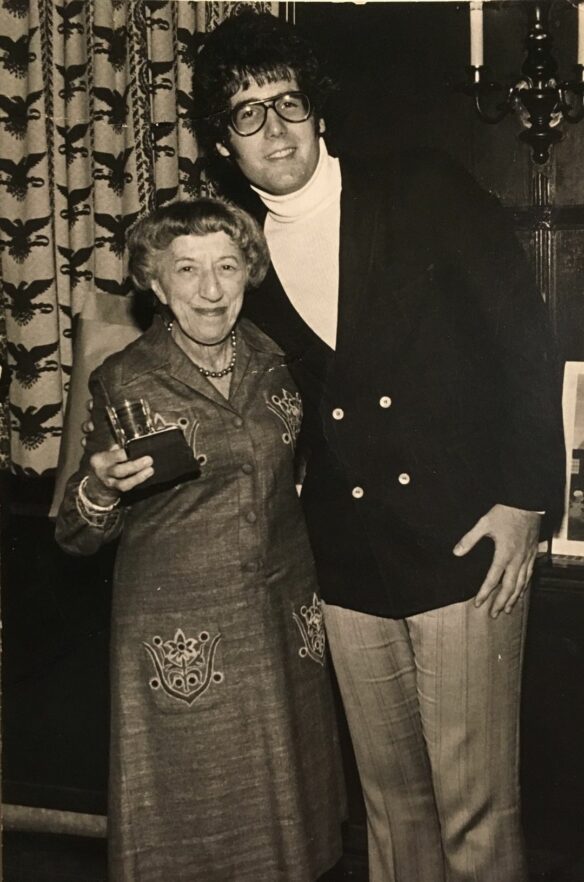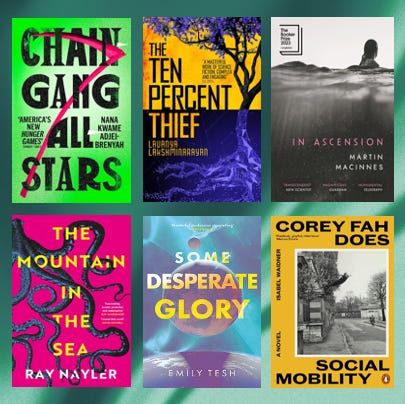(1) A RECOMMENDATION. The Unofficial Hugo Book Club Blog has posted a review of Speculative Whiteness titled “The Nerd Reich”.
…[The sff] genre often portrays societies where eggheads and dweebs are central in the fate of society. Intellectual elites or highly skilled individuals dominate, reflecting a vision where scientific knowledge and technical prowess are the ultimate sources of power. It is not lost on us that these “nerds” are mostly depicted as male and white.
In his recent book Speculative Whiteness, Jordan S. Carroll tackles the problematic consequences of this legacy. The book traces a history of the ways in which the genre was and continues to be co-opted by the alt-right.It’s an excellent work, and probably the most important book about science fiction written this year….
The cover price is just $20, however, its publisher, the University of Minnesota Press, has made the entire book available to read online for free here. This is UMP’s description of Speculative Whiteness:
Fascists such as Richard Spencer interpret science fiction films and literature as saying only white men have the imagination required to invent a high-tech future. Other white nationalists envision racist utopias filled with Aryan supermen and all-white space colonies. Speculative Whiteness traces these ideas through the entangled histories of science fiction culture and white supremacist politics, showing that debates about representation in science fiction films and literature are struggles over who has the right to imagine and inhabit the future. Although fascists insist that tomorrow belongs to them, they have always been and will continue to be contested by antifascist fans willing to fight for the future.
(2) REMAIN CALM. “’Doctor Who has not been shelved’ – BBC responds to rumours” – Radio Times covers the official statement. And heck, I hadn’t even heard the rumor yet! (Probably because all of you are too smart to pass along links from The Sun.)
The BBC has assured Doctor Who fans that the sci-fi drama has not been cancelled, following an “incorrect” tabloid report.
The Sun stirred up concern that the long-running series was to go dormant again for between five and ten years, as it previously did after Sylvester McCoy’s final season – and once again after Paul McGann’s 1996 standalone film.
The speculation comes after perceived disappointment over Doctor Who season 14’s viewing figures, although the BBC and showrunner Russell T Davies have previously drawn attention to the show’s strong engagement from younger viewers.
The Sun’s anonymous source claimed that star Ncuti Gatwa was eyeing a move to Los Angeles to pursue Hollywood work – and that he had filmed a regeneration sequence for the end of the current run.
However, a spokesperson for Doctor Who commented: “This story is incorrect, Doctor Who has not been shelved. As we have previously stated, the decision on season 3 will be made after season 2 airs.
“The deal with Disney Plus was for 26 episodes – and exactly half of those still have to transmit. And as for the rest, we never comment on the Doctor and future storylines.”…
… Addressing the show’s ratings, Davies said last year: “In coming back, I wanted to make it simpler and I wanted to make it younger. Those two things are often not discussed – you read reactions to it and people are missing that.
“It’s simpler and younger – and it is working. The under-16s and the 16-34 audience as well is massive. It’s not doing that well in the ratings, but it is doing phenomenally well with the younger audience that we wanted.”
Doctor Who season 15 – also known as season 2 – is expected to premiere in May 2025, with Gatwa returning alongside Boom’s Varada Sethu as a new companion and former co-star Millie Gibson….
(3) THE BLACK FANTASTIC ONLINE PANEL IS TOMORROW. The Library of America will host an online event featuring Tananarive Due, Victor LaValle, Nana Kwame Adjei-Brenyah, and andré carrington, “The Black Fantastic: The New Wave of Afrofuturist Fiction Registration”, on Wednesday, February 19 from 6:00-7:00 p.m. Eastern. RSVP at the link. Contribution to attend: $5 (can be applied toward purchase of The Black Fantastic or any other book on the LOA Web Store.)

A new wave of science fiction and fantasy by Black writers has burst onto the American literary scene in recent decades: tales of cosmic travel, vampires, and alternate timelines set in profound social and psychological orbits. Building on the legacy of titans Octavia E. Butler and Samuel R. Delany, these visionary writers root their imagination of other worlds in the multilayered realities of Black history and experience.
Award-winning SF authors Tananarive Due, Victor LaValle, and Nana Kwame Adjei-Brenyah join andré carrington, editor of The Black Fantastic: 20 Afrofuturist Stories, for a conversation about genre, influence, and the fascinating and phantasmagoric universes conjured by these new voices on the vanguard of American fiction.
(4) NESFA STORY CONTEST RESULTS. The 2024-2025 winners of the NESFA Short Story Contest were announced at Boskone 62 last weekend:
- Winner: Hazel Milla from North Carolina for the story “Whom the Gods Wish to Destroy”
- Runner-up: Michael Burianyk from Nice, France for the story “The Witches of Kyiv”
- Runner-up: Bailey Maybray from Somerville, MA for the story “Hook, Line, and Clinker”
- Runner-up: Brad Halverson of Utah for the story “Top Dog”
- Honorable Mention: Veronika Majerová from Bratislava, Slovakia for the story “Sleepwalker’s Survival Guide”
- Honorable Mention: E. R. Cook from Westminster, CO for the story “Metamorphi”
- Honorable Mention: Jun Schultz of Cambridge, Massachusetts for the story “The Strid”
There were 45 entries in this year’s contest. The final judges were Jasper Fforde (B62 Guest of Honor), Kelley Armstrong (B62 Special Guest) and E. C. Ambrose (author and teacher).
(5) FUN WHILE IT LASTED. [Item by Steve Green.] The Hungry Hobbit, a Birmingham cafe neighbouring Sarehole Mill (inspiration for Tolkien’s ‘Shire’) was famously forced by New Line Cinema (producers of the Lord of the Rings movies) to change its name to the Hungry Hobb, even though ‘hobbit’ is apparently not a trademarked term. At some point, this was further shortened to the Hungry Hob, and now I learn the business closed in late October 2024. There was an announcement on Facebook, which I’m not on. A fried chicken outlet now occupies on the site.


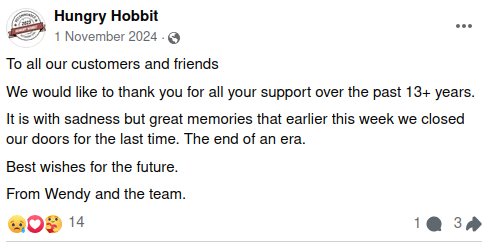
(6) YOUNG EYEBALLS ON THE JOB. James Davis Nicoll recently had the Young People Read Old SFF panel react to Eleanor Arnason’s 1974 Nebula finalist The Warlord of Saturn’s Moons.
…Warlord has been anthologized many times in the half century since it first saw print. I own it in three anthologies and one collection. No surprise. Rereading Warlord, I see themes relevant to the world in which we now live… as much as I might wish that were not the case.
But will young eyes see the same story I do? Let’s find out!
(7) VAS YOU DERE? “Time-Tunneling Into a Different Brooklyn with Jonathan Lethem”, an audio interview at The City.
…Lethem digs into his reasons on re-reexamining the Brooklyn he wrote about 20 years earlier in The Fortress of Solitude, but doing so this time with the tools of a journalist including long interviews conducted amid the dislocation and isolation of the COVID lockdown, and much more:
“One of the things I was really interested in was the idea of collective psychic experience, that that people go through things in a space together and then they don’t even know what part of it is really in their own head, and what was pushed in, stuck in there, from someone else. In a way, it is a typical New York thing. We were all there, right, when Mike Piazza hit the home run after 9/11? Every one of us, 9 million people were in the stadium that day. Well, we weren’t all there. We didn’t even all have the TV on. But somehow, retroactively, you fit yourself to this experience because it’s been had so intensely by other people that you’re confused about whether it was you or someone else who was there.
“And this was true for me in exploring the myths of a neighborhood and the myths on the street: individual moments of violence or confrontation or trauma on the street like that day that this guy put this other guy in a head lock and then he pulled out a knife. Somehow, we were all on that street corner. “I saw it with my own eyes!” Well, that isn’t true. There wasn’t some, stadium full of people watching this thing. It happened in a fugitive instant, but somehow we were all firsthand witnesses. So this idea that this transmission of mythic collective experience, this was a lot of what my questions for people were about: Did something that we all remember really happen? And if so, who did it happen to? Maybe I was the victim or maybe I was just a bystander. I don’t know…“
(8) TODAY’S BIRTHDAY.
[Written by Cat Eldridge.]
February 18, 1919 — Jack Palance. (Died 2006.)

Let’s talk about Jack Palance who was born of Ukrainian immigrant parents with name of Volodymyr Palahniuk. His professional surname was actually a derivative of his original name. While guesting on What’s My Line?, he noted that no one could pronounce his last name, and how it was suggested that he be called Palanski but instead that he decided just to use Palance instead. He didn’t say where his first name came from.
(OK nitpickers, I do not want to hear from you. Seriously, I don’t. His career makes a gaggle of overly catnapped kittens playing with skeins of yarn with lots of lanolin still on it look simple by comparison so I may or may not have knitted it properly here, so bear with my version of it.)
Surprisingly it looks like that he got his start in our end of things in television performances and relatively late as they started in the Sixties with the first one being Jabberwock on a musical version of Alice Through the Looking Glass. I’m sure I want to see that as it had Jimmy Durante as Humpty Dumpty, and the Smothers Brothers as Tweedledee and Tweedledum.
Next up was a Canadian production with him in the title role of The Strange Case of Dr. Jekyll and Mr. Hyde, and that in turn saw him being the lead in Dracula, also known as Bram Stoker’s Dracula and Dan Curtis’ Dracula, the last when the ego of the Director got way, way too big.
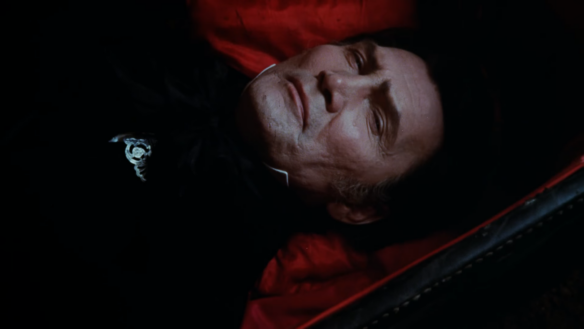
I’m going to digress here because it’s so fascinating. In 1963, The Greatest Show on Earth first aired. This Circus drama had Johnny Slate as the big boss who keeps the circus running as it moves from town to town. It was produced by Desilu, the production company founded by Lucille Ball and Desi Arnaz, Sr. It lasted but one season as it was up against shows by Jack Benny and Richard Boone.
A bit of hard SF was next, Cyborg 2, released in other countries as Glass Shadow, creative but terribly uninformative, where he’s Mercy, an old renegade cyborg.
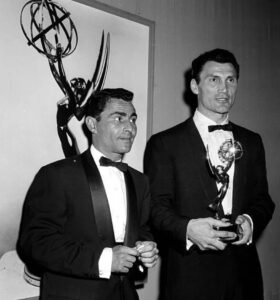
Remember my Birthday on the wonderful Carol Serling? Well, he was in The Twilight Zone: Rod Serling’s Lost Classics film that she made possible as Dr. Jeremy Wheaton in “Where the Dead Are”.
If Treasure Island counts as genre and yes I do count it in my personal canon, then his role as Long John Silver is definitely canon.
He got to play Ebenezer Scrooge in Ebenezer. Now the fun part is that it’s set in the Old West, where he is the most greedy, corrupt and mean-spirited crook in the old West obviously, he sees no value in “Holiday Humbug” by several reviewers. This film I went to look up on Rotten Tomatoes, but no rating there.
Not at all shockingly to me, he shows up on The Man from U.N.C.L.E. where he plays a character of Louis Strago in a two-parter “The Concrete Overcoat Affair” which got re-edited as “The Spy in the Green Hat”.
A bit of horror was next in Tales of the Haunted as Stokes in “Evil Stalks This House” was up late in career.
Finally for roles that I’m reasonably sure were of genre interest, he was on Buck Rogers in the 25th Century as Kaleel in the “Planet of the Slave Girls” episode.
One more gig for him related to genre or at least genre adjacent, though not as a performer, but as the host of Ripley’s Believe It or Not! for four years. He had three different co-hosts from season to season, including his daughter, Holly Palance, actress Catherine Shirriff, and finally singer Marie Osmond.
(9) COMICS SECTION.
- Capre Diem misapplies a regular IT response.
- Free Range meets one of the first strangers.
- Robbie and Bobby has a low budget remake.
- Brewster Rockit encounters sudden obsolescence.
(10) LITERARY TREASURES. “Joan Didion’s official archive is going on view at the New York Public Library next month” reports Gothamist.
The New York Public Library is opening up its archives of Joan Didion and her husband Gregory Dunne to the public beginning March 26.
The Library acquired the late writers’ archives in 2023, just over three years since Didion’s 2021 death at age 87. Dunne died in 2003, aged 71.
The dual collection comprises a total of 336 boxes “most of which have never been seen publicly” and which represents “the most comprehensive collection of the authors’ materials” according to the library’s announcement.
These materials feature a vast array of both professional and personal documents from the couples’ lives, including six decades of correspondence, hundreds of photographs and 26 screenplay drafts the pair worked on together. The 1971 film “The Panic in Needle Park” and 1976’s “A Star Is Born” are among them. Visitors will also find annotated typescripts from Didion’s political reporting in the 1980s and ‘90s, and reference material for her books “The Year of Magical Thinking” and “Blue Nights.”…
(11) PASSION FOR HIS CAREERS. “’No micro transactions, no bullshit’: Josef Fares on Split Fiction and the joy of co-op video games” in the Guardian.
There aren’t many video game developers as outspoken as Hazelight’s Josef Fares. Infamous for his expletive-laden viral rants at livestreamed awards shows, Fares is a refreshingly fiery and unpredictable voice in an all too corporate industry. As he puts it, “It doesn’t matter where I work or what I do, I will always say what I want. People say to me that that’s refreshing – but isn’t it weird that you cannot say what you think in interviews? Do we live in a fucking communist country? Obviously, you have got to respect certain boundaries, but to not even be able to express what you think personally about stuff? People are too afraid!”
Yet while gamers know him as a grinning chaos merchant and passionate ambassador of co-op gameplay, in Fares’ adopted homeland of Sweden, he is best known as an award-winning film director. His goofy 2000 comedy Jalla! Jalla! was a domestic box office success, while his 2005 drama Zozo was a more introspective work about his childhood experience of fleeing the Lebanese civil war…
… He soon took his evolving prototype to a respected game studio in Stockholm – Starbreeze. “They were like, ‘Well, maybe you can do this as a kind of test project.’ But I’m like, fuck a test, I’m going to do the whole thing!”
That passion fuelled a year and a half of intense work, with Brothers: A Tale of Two Sons being released in 2013. The co-op adventure about siblings embarking on a dangerous journey to find a cure for their sick father has now sold over 10m copies. Despite its success, many in Sweden were baffled by his artistic pivot, a transition for Fares that felt natural. “With movies, I came to a point where I felt that the passion really wasn’t there. Passion lead me to video games. It was very challenging being new in the industry and coming in with a different approach – wanting to create new mechanics. Today it’s different because [people] listen to me, but it was very hard in the beginning.”…
(12) A CULTURE WARRIOR MUSTERS OUT. Doris V. Sutherland has surprisingly devoted a full article to “The Brief Life of the Helicon Awards”. I say “surprisingly” because this was simply an award made up by Richard Paolinelli so he could give it to friends and authors he wanted to ingratiate himself with. (And that worked, because writers can’t resist anything labeled an “award” — David Weber thanked him online for his.) I have followed the Helicon Awards from start to finish – Paolinelli says it is being retired this year — and did not think its pretentions were even worth making fun of anymore. But fine minds can differ…
…Even the names chosen for some of the award categories serve as battle-standards for the culture war. The original Helicon category line-up included a Laura Ingalls Wilder New Author Award, a Melvil Dewey Innovation Award and Frank Herbert Lifetime Achievement Award.
For context, in 2018 the US Association for Library Service to Children removed Laura Ingalls Wilder’s name from an award for children’s literature in response to a controversy regarding racial attitudes in her writing, while 2019 saw Melvil Dewey’s name stricken from an American Library Association award over his history of racism, antisemitism and sexual harassment. (The Frank Herbert Award would appear to be the odd-one-out, as I’m not aware of Herbert having been particularly controversial circa 2019.)
In 2020, after Worldcon’s John W. Campbell Award for Best New Writer was renamed (again, because of its namesake’s racist attitudes) the Helicon Society introduced the John W. Campbell Diversity in SFF Award. This was around for three years, the winners being Larry Correia (founder of the Sad Puppies), Orson Scott Card (controversial for his homophobia) and J. K. Rowling (no introduction needed). When the category was retired, Paolinelli admitted on his blog that it served as a “trolling the SJWs award”….
(13) RETURN ADDRESSEE UNKNOWN. [Item by Steven French.] Another argument for why Oumuamua was (most likely) not an alien spacecraft. “Many stars could have sent us ‘Oumuamua” reports Phys.Org. And here’s the take-home message:
Interstellar space may therefore be full of dagger-shaped shards of rock and ice (an exaggeration, but a fun quote for dinner parties nonetheless).
(14) DOOM UNSCREWED. WE HOPE. Animation World News introduces “’The Day the Earth Blew Up: A Looney Tunes Movie’ Official Trailer”.
Faced with a perilous mission to save the earth, Porky Pig and Daffy Duck eschew confidence… “How could we possibly screw this up?” How could they not? …
…In the brand-new 2D animated sci-fi buddy action comedy, Porky Pig and Daffy Duck turn into unlikely heroes when their antics at the local bubble gum factory uncover a secret alien mind control plot. Against all odds, the two are determined to save their town (and the world!)… that is if they don’t drive each other crazy in the process….
[Thanks to Kathy Sullivan, Teddy Harvia, Mike Kennedy, Olav Rokne, Steve Green, Cathy Green, Steven Lee, Andrew Porter, John King Tarpinian, Chris Barkley, Cat Eldridge, SF Concatenation’s Jonathan Cowie, and Steven French for some of these stories. Title credit belongs to File 770 contributing editor of the day Olav Rokne.]
